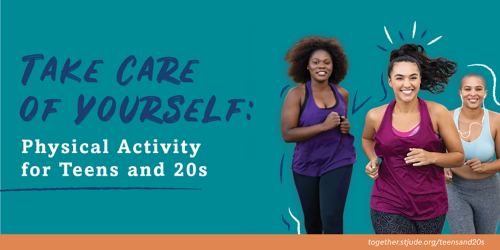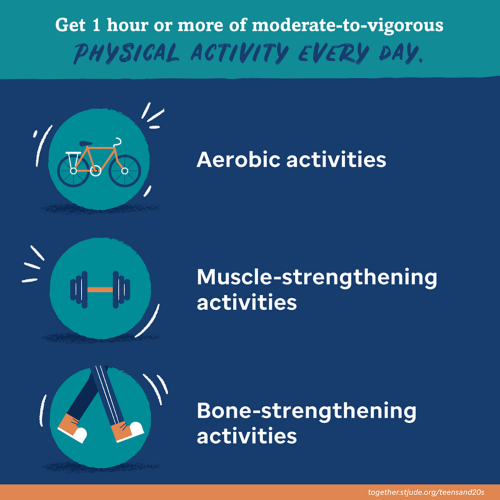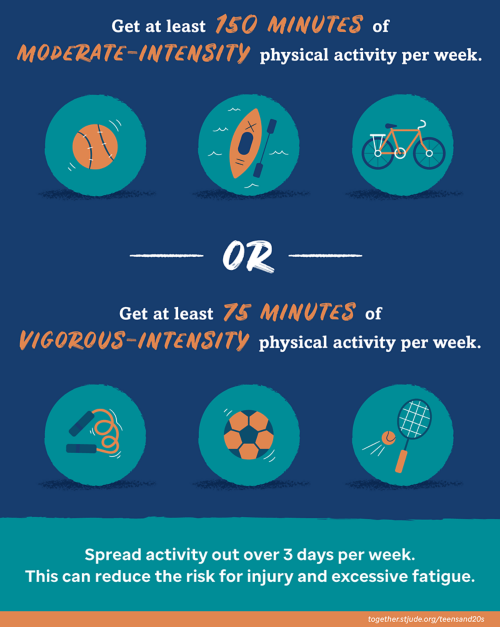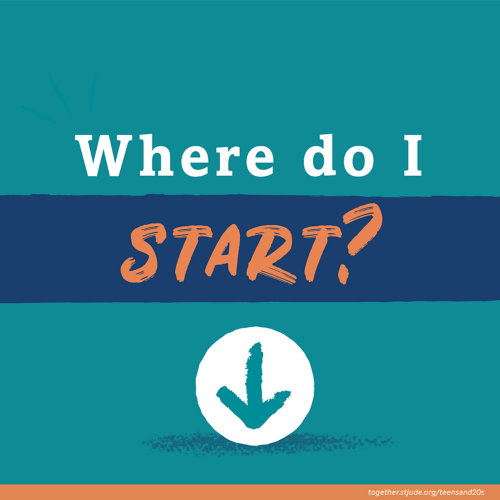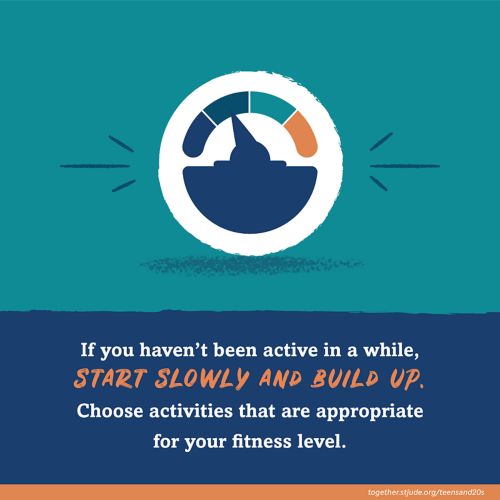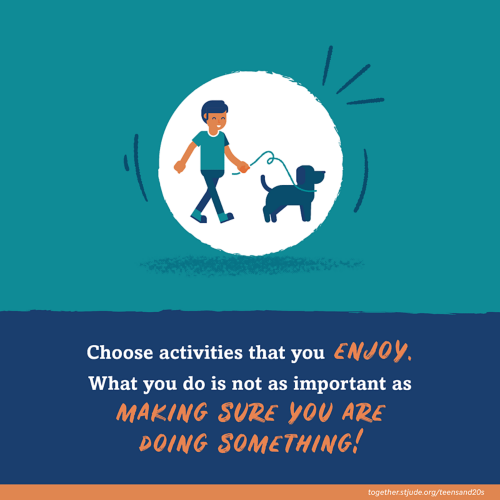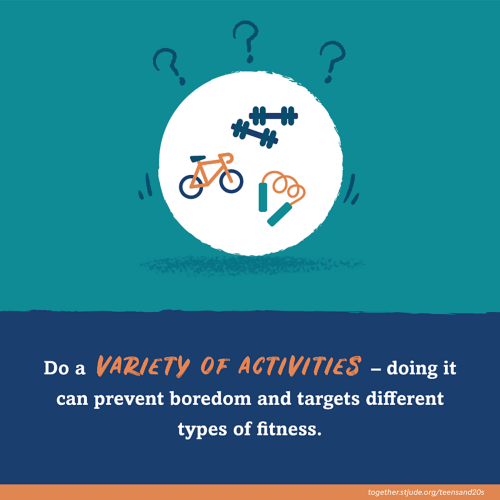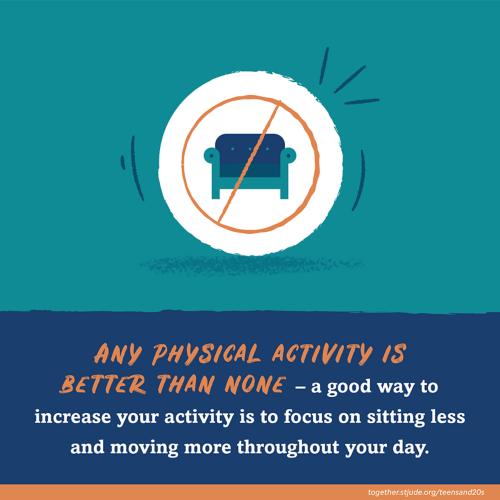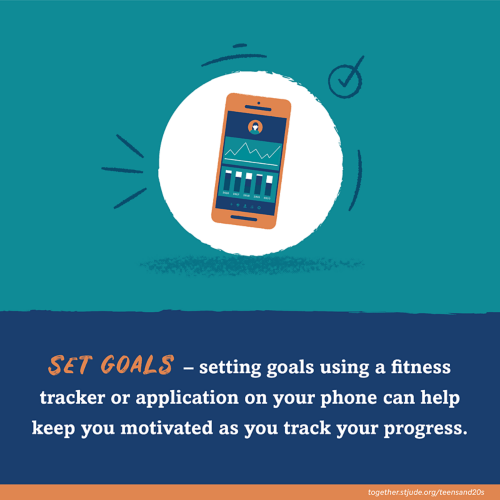What are the benefits of being physically active?
- Children and teens up to age 17 years:
- Improved bone health
- Helps with maintaining a healthy weight
- Improved heart, lung, and muscle fitness
- Improved brain function (cognition)
- Decreased risk for depression
- Teens and adults age 18 years and older:
- Decreases the chance of an early death
- Lower risk of cardiovascular disease, including high blood pressure, heart disease and stroke
- Decreased anxiety
- Decreased risk for depression
- Improved quality of life
- Improved physical function
- Improved sleep


